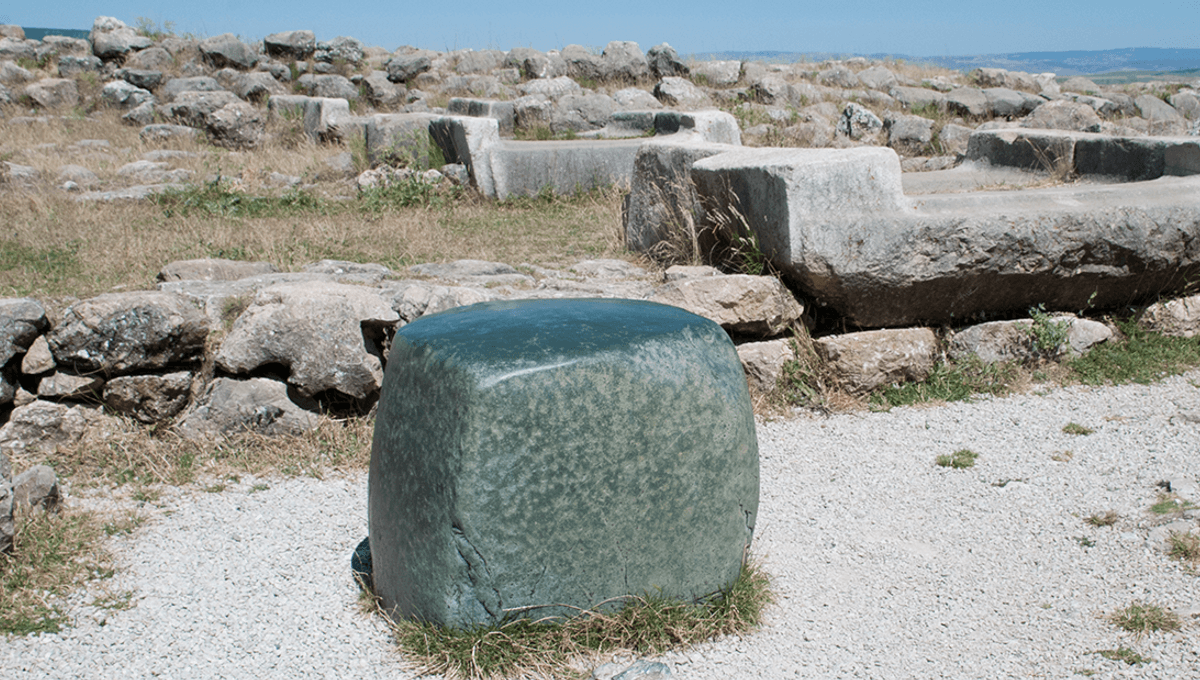
Amongst the remains of the Great Temple at Hattusa, located in modern-day Turkey, is a feature that stands out: a large monolith of nephrite, carved into the shape of a cube.
The stone, called a “wish stone” by locals to the area, was found in the remains of the Hittite empire that settled in the area from around 2000 BCE, and became one of the dominant powers of the Middle East by 1340 BCE. The capital, Hattusa, likely housed 40,000-50,000 people at the civilization’s peak, and was home to a number of temples, royal residencies, and fortifications, before being gradually abandoned over the course of several decades around 1200 BCE.
Many of these structures survived (albeit barely) until today, including the Great Temple and the mysterious hunk of nephrite within it. Unfortunately, we have been left with few clues to the stone’s original purpose.
“The green stone is very different from other stones in this archaeological site and that is why it is attracting such an attention,” archaeologist Andreas Schachner told Anadolu Agency in 2019. “This stone is serpentinite or nephrite (jade). It is a kind of stone that can be found in the area. It is not so special stone, but it is remarkable that it is preserved monolithically.”
There have been suggestions that the stone may have had religious significance, with cults prevalent in the Hittite Empire, as seen in a nearby settlement of Alaca Höyük.
“During the later period of the Hittite Empire, Alaca Höyük seems to have become a major cult centre,” archaeologist Damien Stone writes in his book The Hittites: Lost Civilizations, adding that ancient Hittite records give clues that the site was likely dedicated to a Sun goddess. “No inscription has been found yet that identifies its ancient name, but the most likely candidate is Arinna, the city of the Sun-goddess.”
However, similar stones have not been found despite the abundance of nephrite in the area, suggesting that the rock may not have had much significance. The ultimate purpose remains unknown, and it could simply have served as the base of a statue. Unless significant finds are made at the site, or others around the area, we will probably never know its true purpose. But we can confidently say it doesn’t grant any wishes.
Source Link: The Original Purpose Of The Mysterious Hattusa Monolith Is Unknown